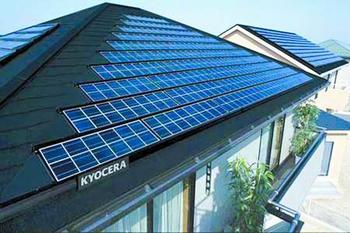 The history of solar cell development can be broadly divided into five stages: budding, climbing, growth, booming, and recession.
The history of solar cell development can be broadly divided into five stages: budding, climbing, growth, booming, and recession. The budding period (1839-1955):
The marked event of this period was the discovery of the "photovoltaic effect." In 1839 when Becquerel, a 19-year-old French physicist, discovered the "photovoltaic effect." In 1954, Bell Labs developed the first practical value of silicon solar cells. The New York Times called this groundbreaking achievement "the beginning of a new era that will eventually lead to unlimited sunlight serving human civilization."
Climbing period (1959~1994):
In 1959, the first monocrystalline silicon solar cell was introduced, and in 1960, the solar cell was first realized in grid-connected operation. In 1978, 100KW photovoltaic power station was built in the United States, and the efficiency of solar energy continued to increase. Among them, the efficiency of monocrystalline silicon solar cells reached 20% in 1980, and polysilicon was 14.5%.
Growth period (1994 ~ 2007):
During the ten years from 1994 to 2004, global solar cell production increased by 17 times, and the average growth rate in the past five years exceeded 50%. After 2004, the solar cell market was fiercely competitive and the leading pattern in Europe and Japan had been broken. Despite the sales market in Europe, the production center has turned to Asia. In 2007, China's solar cell output accounted for about one-third of the world's total production, becoming the world's largest solar cell producer.
Prosperous period (from 2010 to the first half of 2011):
Demand for the suppression of the global economic crisis has gradually released since the second half of 2010, and production capacity is in short supply. By the first half of 2011, the global photovoltaic industry has witnessed a new round of booming period, and the major manufacturers have expanded their production in large numbers.
The recession period (the second half of 2011 to the end of 2012):
In the post-financial crisis era, the blind expansion of production capacity led to a serious overcapacity in the entire photovoltaic industry, and the price of polysilicon and other photovoltaic products fell by the “cliff-breaking†style.
Digital currency transactions allow users to convert existing digital currencies into other digital currencies. The entire transaction does not involve any legal tender. Because of the relatively loose regulation, the mainstream digital currency trading platform also opened this function.Digital Asset Exchange (DAE) is a platform for matching transactions between digital currencies, digital currencies and legal currencies. It is the main place for encrypting the circulation and price determination of digital currency transactions.
Compared with traditional stock exchanges, digital asset trading platform not only matches transactions, but also plays the role of market maker and investment bank. The role of the market maker in the trading platform can increase the liquidity of the market, and the trading platform can earn the transaction price difference. The role of the investment bank of the trading platform is to provide services such as issuance and underwriting of digital currency, from which the trading platform collects money fees, or collects deposits in the form of community voting of the trading platform.
Currency Exchange,Digital Currency Exchange,Virtual Digital Currency Exchange,Display Currency Exchange
China youbi digital assets limited , https://www.ubcoinchina.com